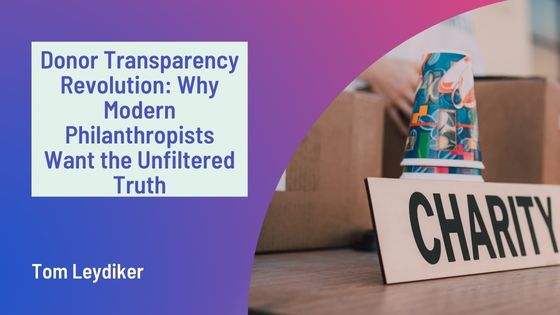The relationship between donors and non-profits is undergoing a fundamental transformation. For decades, the conventional wisdom has been clear: present polished success stories, minimize challenges, and maintain strict message control. This approach, once standard practice, is increasingly alienating the very supporters organizations hope to attract and retain.
Today’s donors—particularly millennials and Gen Z, but increasingly across all demographics—are demanding a new kind of relationship with the organizations they support. They’re seeking authentic transparency: honest communication about challenges, failures, and the messy reality of social change work. This shift isn’t just anecdotal; research from the Donor Engagement Study found that 76% of donors under 40 ranked “honest communication about challenges” as a top factor in their giving decisions.
The catalyst for this change? A perfect storm of factors has eroded trust in traditional institutional communications:
- Highly public scandals in both corporate and non-profit sectors
- The rise of social media exposing inconsistencies in organizational messaging
- Increased sophistication about the complexity of social problems
- Growing awareness of paternalistic or colonizing narratives in philanthropy
- The influence of direct-to-consumer brands embracing radical transparency
Modern donors have developed finely-tuned authenticity detectors. They can spot the difference between genuine openness and carefully crafted “transparency theater”—those curated glimpses behind the curtain that actually reveal very little of substance. The glossy annual reports and perfectly packaged impact stories that impressed previous generations now often trigger skepticism rather than confidence.
Consider the contrasting experiences of two international development organizations facing similar program challenges. Organization A followed traditional crisis communication protocols—minimizing public acknowledgment of problems, presenting carefully worded updates, and emphasizing unrelated successes. Organization B took a radically different approach, publishing a detailed blog post explaining exactly what went wrong, the factors they had missed in planning, and their specific plans for correction. Six months later, Organization B had retained 94% of their donors and actually increased average gift size, while Organization A experienced a 30% donor attrition rate.
This doesn’t mean transparency requires airing every internal disagreement or operational detail. Strategic transparency means providing meaningful context and honest assessment in areas that matter most to mission advancement. The key areas donors increasingly expect transparency around include:
- Program failures and lessons learned
- How overhead actually supports mission effectiveness
- Decision-making processes for strategic choices
- Power dynamics with communities served
- Financial challenges and sustainability concerns
- Internal diversity, equity and inclusion realities
- Environmental impact of operations
Organizations hesitant to embrace transparency typically cite fears of donor abandonment, legal vulnerability, or competitive disadvantage. Yet research increasingly shows these fears are largely unfounded. The Donor Trust Initiative’s three-year study found that organizations practicing proactive transparency experienced 34% higher donor retention rates and 22% higher average gift increases compared to those practicing minimum required disclosure.
The psychological underpinning is straightforward: when organizations voluntarily share uncomfortable truths, they establish credibility that carries over to their success stories. Additionally, humans are naturally drawn to authentic narratives that include struggle—it’s how we naturally process stories and information. The sanitized versions of social change work often fail to engage donors at this fundamental human level.
Implementing a transparency revolution requires:
- Establishing internal psychological safety for honest assessment
- Developing clear boundaries between appropriate transparency and oversharing
- Training communications staff in authentic storytelling techniques
- Creating systems for capturing and sharing learning from failures
- Engaging board members as champions for transparent communication
- Building dedicated communication channels for different levels of disclosure
The most innovative organizations are finding creative approaches to transparency. The Urban Youth Project publishes quarterly “Challenges & Changes” reports highlighting program adjustments based on failures. Global Health Access includes a “What We Got Wrong” section in their annual impact report. The Climate Initiative hosts monthly “Open Books” calls where donors can ask questions about anything from financial statements to program metrics.
The transparency revolution isn’t about performative vulnerability or unnecessary disclosure. It’s about recognizing that today’s donors want to be true partners in your work—and partners deserve the unfiltered truth. By embracing strategic transparency, organizations don’t just satisfy donor expectations; they build the authentic relationships necessary for sustained, meaningful support.







